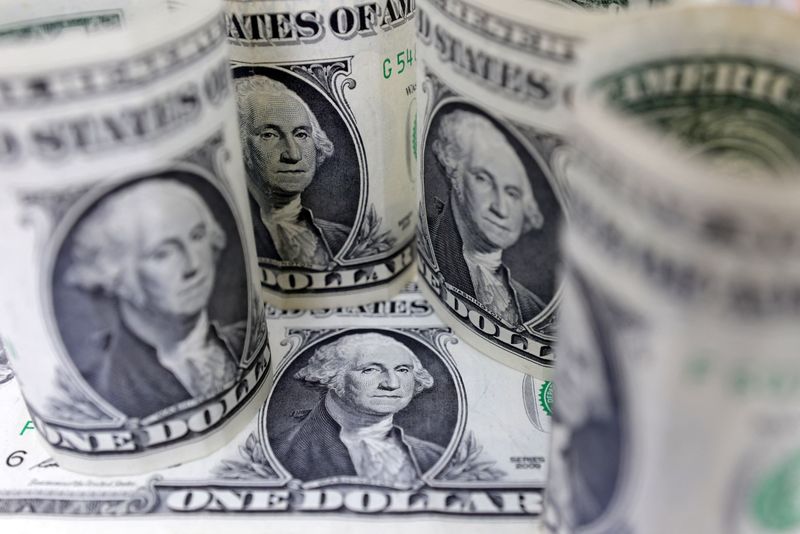By Gertrude Chavez-Dreyfuss
NEW YORK (Reuters) - Japan and China pared back holdings of U.S. Treasuries in May to multi-year lows, data from the U.S. Treasury department showed on Monday.
Japan's holdings fell to $1.212 trillion, the lowest since January 2020, when the country's stash of Treasuries was $1.211 trillion. In April, Japan's holdings were at $1.218 trillion.
China's hoard of U.S. government debt dropped as well to $980.8 billion in May, still the lowest since May 2010 when its holdings were at $843.7 billion, data showed. In April, China had $1.003 trillion in Treasuries.
The world's second largest economy has reduced holdings Treasuries for six straight months.
Although China and Japan sold Treasuries in May, U.S. Treasury yields slid. The benchmark 10-year Treasury yield started the month of May at 2.996%, down about 15 basis points to 2.844% by the end of the month.
Overall, foreign holdings of Treasuries slid to $7.421 trillion in May, the lowest since May 2021, from $7.455 trillion in April.
"It's another month of selling by foreign investors. But it seems like the selling is starting to slow because in May, the move higher in interest rates faded a little bit," said Gennadiy Goldberg, senior rates strategist at TD Securities in New York.
"Japan and China were selling which is real a continuation of recent trends. We got another month of selling from Japan, but if you look at the pace, there was certainly a deceleration. Nothing like we saw in March at the end of Japan's fiscal year."
On a transaction basis, U.S. Treasuries saw net foreign inflows of $99.84 billion in May, the largest since March 2021, from outflows of $1.153 billion in April.
The Federal Reserve raised benchmark interest rates by 50 basis points in May and in June lifted rates by a hefty 75 basis points to curb stubbornly strong inflation.
Investors have priced in another 75 basis point rate hike at the Fed meeting later this month.
In other asset classes, foreigners sold U.S. equities in May for a fifth straight month amounting to $9.15 billion, from outflows of $7.04 billion in April. The S&P 500 has been down nearly 20% since the beginning of the year.
U.S. corporate bonds posted inflows in May of $4.46 billion, compared with inflows of $22.5 billion the previous month. Foreigners were net buyers of U.S. corporate bonds for five straight months.
The data also showed U.S. residents once again reduced their holdings of long-term foreign securities, with net sales of $22.8 billion in May from sales of $36.7 billion in April.
